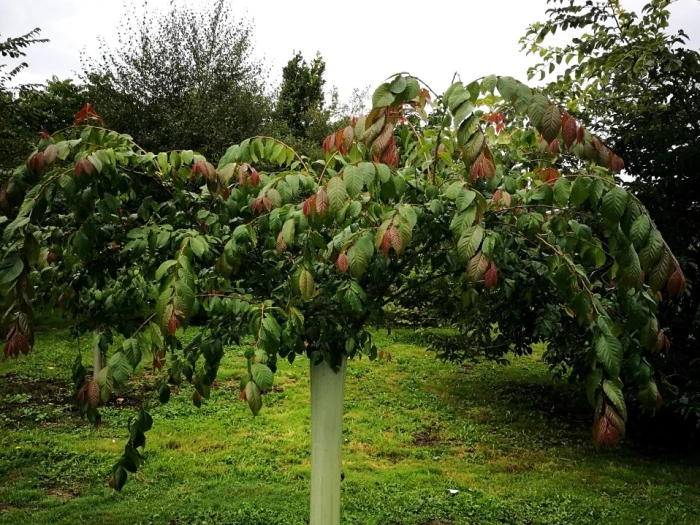Vietnam Elm
(Ulmus lanceifolia)
Vietnam Elm (Ulmus lanceifolia)
/
/

Ptelea
CC BY-SA 4.0
Image By:
Ptelea
Recorded By:
Copyright:
CC BY-SA 4.0
Copyright Notice:
Photo by: Ptelea | License Type: CC BY-SA 4.0 | License URL: https://creativecommons.org/licenses/by-sa/4.0 | Uploader: Ptelea | Publisher: Wikimedia Commons | Title: GFA_U._lanceifolia,_juvenile_tree.jpg | Notes: Photo of ''[[Ungnadia speciosa]]'' ([[Mexican buckeye]]) shrub Desert Demonstration Garden in [[Las Vegas]], taken March 2004 by [[User:Stan Shebs]] {{GFDL}} |



Estimated Native Range
Climate Requirements
| • Precipitation | 51" - 69" |
| • High Temp. | 77°F - 91°F |
| • Low Temp. | 39°F - 64°F |
Summary
Ulmus lanceifolia, commonly known as Vietnam Elm, is a large evergreen tree in its tropical range but becomes deciduous in the cooler northern parts of its range. It is native to forested areas and riparian zones in Southeast Asia, where it can be found at altitudes of up to 2500 meters. The tree can reach a height of up to 45 meters, rivaling the stature of the English Elm, and is characterized by its pendulous branches and bark that exfoliates in thin scales. The lanceolate leaves are narrow, less than 10 cm in length and 3.5 cm in width, and borne on wingless branchlets.
Vietnam Elm is not commonly cultivated due to its rarity and lack of cold hardiness, but where it can be grown, it provides dense foliage and a grand presence. It requires full sun exposure, medium amounts of water, and well-drained soil to thrive. Flowering time varies with latitude, starting in October in the north and moving to February–March in the south. The obovate samarae, which are the tree’s fruit, measure 12–30 mm in length by 11–24 mm in width. While not widely used in cultivation, it could serve as a specimen tree in large tropical or subtropical gardens.CC BY-SA 4.0
Vietnam Elm is not commonly cultivated due to its rarity and lack of cold hardiness, but where it can be grown, it provides dense foliage and a grand presence. It requires full sun exposure, medium amounts of water, and well-drained soil to thrive. Flowering time varies with latitude, starting in October in the north and moving to February–March in the south. The obovate samarae, which are the tree’s fruit, measure 12–30 mm in length by 11–24 mm in width. While not widely used in cultivation, it could serve as a specimen tree in large tropical or subtropical gardens.CC BY-SA 4.0
Plant Description
- Plant Type: Tree
- Height: 70-100 feet
- Width: 20-45 feet
- Growth Rate: Moderate
- Flower Color: N/A
- Flowering Season: Spring, Fall
- Leaf Retention: Evergreen
Growth Requirements
- Sun: Full Sun
- Water: Medium
- Drainage: Medium
Common Uses
Bee Garden, Bird Garden, Butterfly Garden, Low Maintenance
Natural Habitat
Forested areas and riparian zones in Southeast Asia
Other Names
Common Names:
Scientific Names: Ulmus lanceifolia , Ulmus tonkinensis , Ulmus hookeriana
GBIF Accepted Name: Ulmus lanceifolia Roxb.